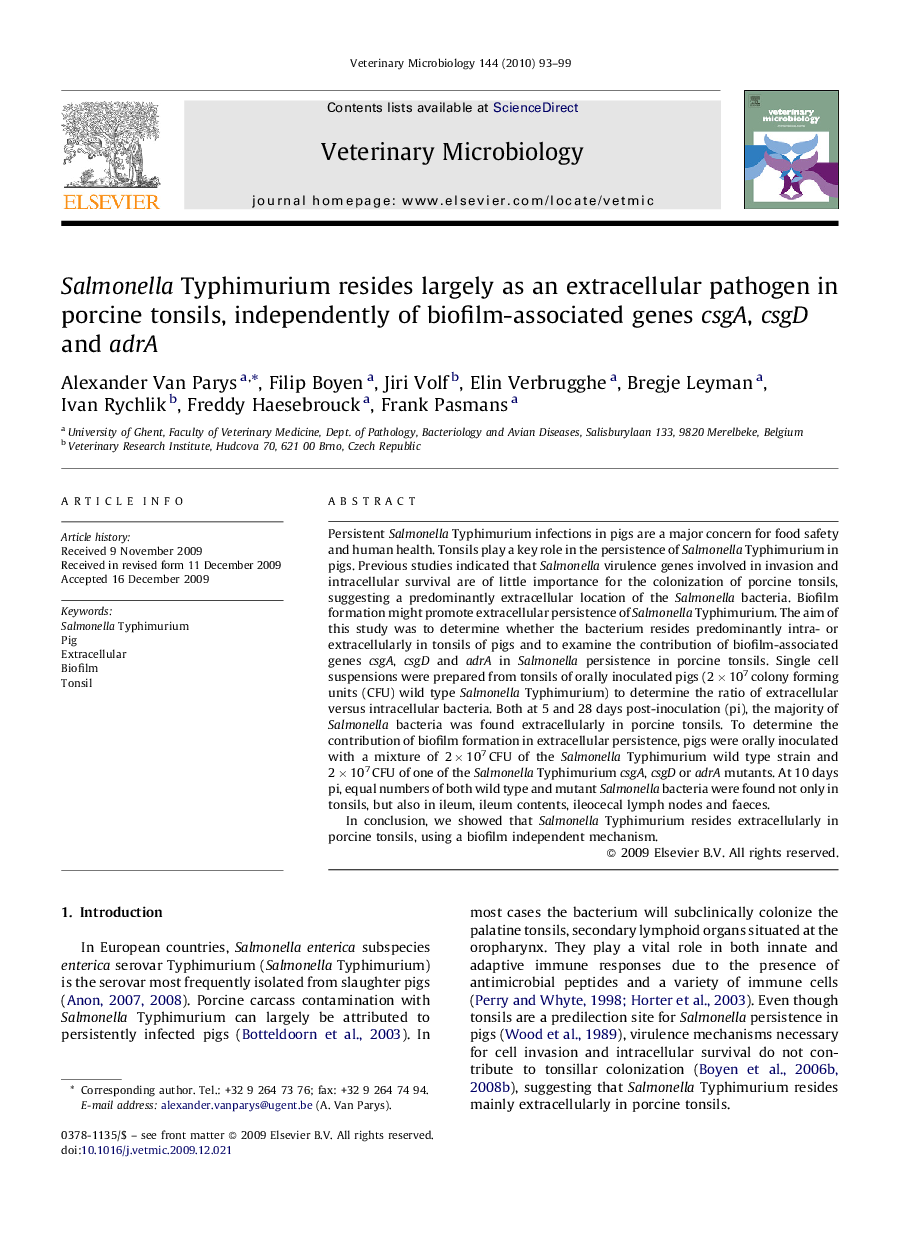| Article ID | Journal | Published Year | Pages | File Type |
|---|---|---|---|---|
| 2467845 | Veterinary Microbiology | 2010 | 7 Pages |
Persistent Salmonella Typhimurium infections in pigs are a major concern for food safety and human health. Tonsils play a key role in the persistence of Salmonella Typhimurium in pigs. Previous studies indicated that Salmonella virulence genes involved in invasion and intracellular survival are of little importance for the colonization of porcine tonsils, suggesting a predominantly extracellular location of the Salmonella bacteria. Biofilm formation might promote extracellular persistence of Salmonella Typhimurium. The aim of this study was to determine whether the bacterium resides predominantly intra- or extracellularly in tonsils of pigs and to examine the contribution of biofilm-associated genes csgA, csgD and adrA in Salmonella persistence in porcine tonsils. Single cell suspensions were prepared from tonsils of orally inoculated pigs (2 × 107 colony forming units (CFU) wild type Salmonella Typhimurium) to determine the ratio of extracellular versus intracellular bacteria. Both at 5 and 28 days post-inoculation (pi), the majority of Salmonella bacteria was found extracellularly in porcine tonsils. To determine the contribution of biofilm formation in extracellular persistence, pigs were orally inoculated with a mixture of 2 × 107 CFU of the Salmonella Typhimurium wild type strain and 2 × 107 CFU of one of the Salmonella Typhimurium csgA, csgD or adrA mutants. At 10 days pi, equal numbers of both wild type and mutant Salmonella bacteria were found not only in tonsils, but also in ileum, ileum contents, ileocecal lymph nodes and faeces.In conclusion, we showed that Salmonella Typhimurium resides extracellularly in porcine tonsils, using a biofilm independent mechanism.
